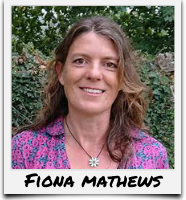Our office will be closed from 23rd December 2025 to 1st January 2025 in observance of the holidays. Regular business hours will resume on Monday, 5th January 2026. To ensure timely processing, please submit your orders by close of business on 8th December 2025, allowing us to accommodate shipping and lead times. For urgent matters during this time, please contact us HERE.

Fiona Mathews became addicted to bats after going on a ‘bat walk’ 25 years ago. She now professor of Environmental Biology at the University of Sussex, UK, and is chair of the UK’s Mammal Society. Fiona led one of the first multi-centre projects to assess the impacts of wind energy facilities on bats. Working at 46 wind energy sites, bat activity was assessed using SM2 and SM2+ bat detectors and casualties were identified using search dogs. The project revealed surprisingly high fatalities at some unexpected locations, which led us to re-evaluate our preconceptions about where bats were likely to be found! The project involved the first large-scale deployment of SM2 bat detectors in Britain, and there was a steep learning curve on everything from dealing with the weather to managing vast amounts of data. Fiona’s research team continue to use SM2 and SM4 bat detectors to monitor bat activity, usually at a landscape-scale. Recent projects include assessing connectivity pathways for greater horseshoe bats using acoustic monitoring and Circuitscape modelling, and assessing the impacts of road noise on bats. Currently, woodlands used by the rare barbastelle bat are being identified using a citizen-science project using SM2+ detectors.
In the spirit of reconciliation, Faunatech acknowledges the Traditional Custodians of Country throughout Australia and their connections to land, sea and community. We pay our respect to Elders past and present and extend that respect to all Aboriginal and Torres Strait Islander peoples today.
